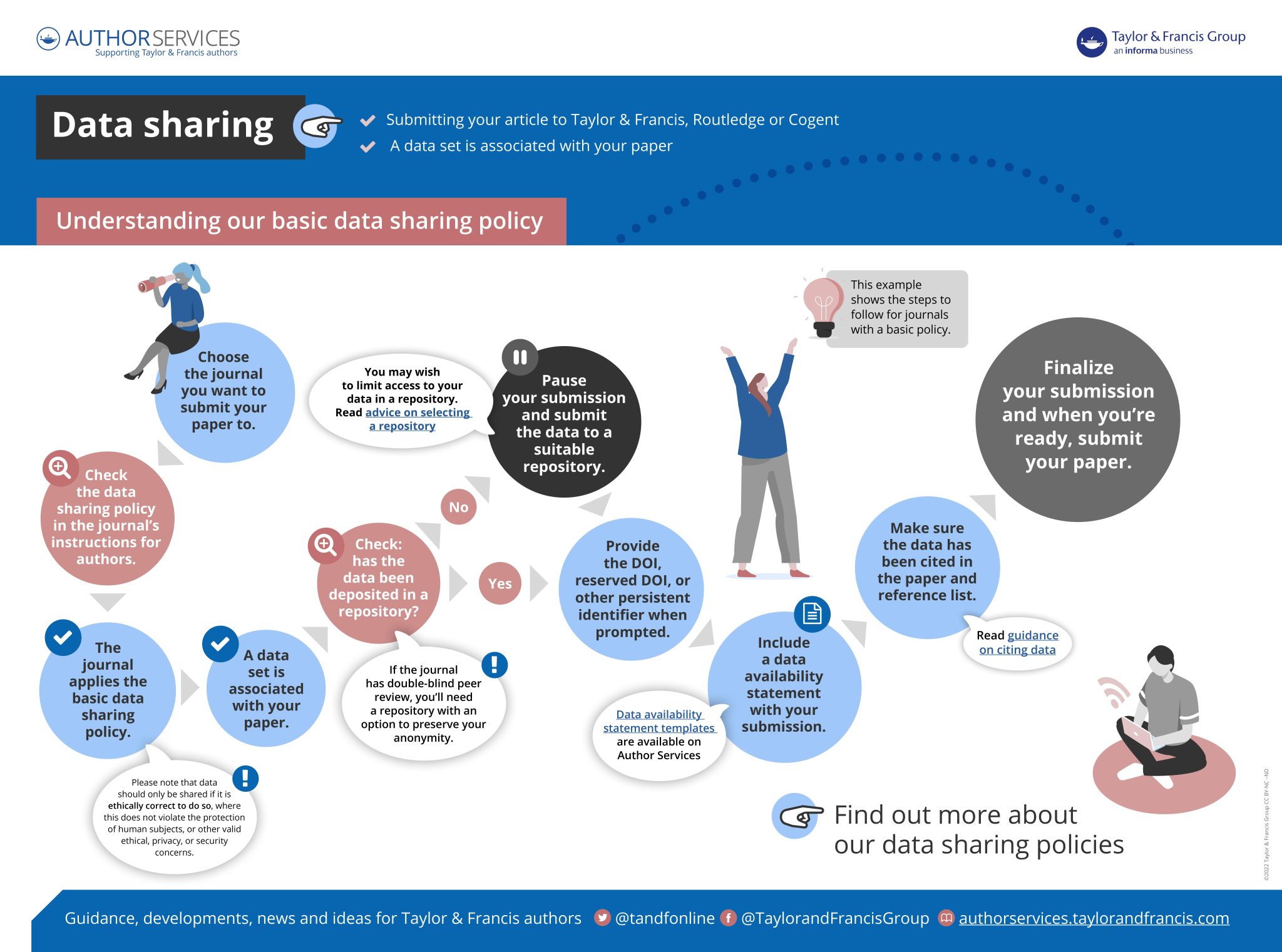Making your submission
Submissions guidelines for authors
Once you’ve chosen the right journal for your research and written your paper, it’s time to make your submission.
Read on for information to help guide you through the whole process of article submission. We have also included a useful checklist to make sure you’ve ticked off all the important tasks.
Expect to know how to submit a paper for publication in a journal by the time you are through.
Jump to section
Follow these 5 steps to prepare for your submission.
1. Read your chosen journal’s submission requirements
Visit Taylor & Francis Online to check the specific submission requirements for your chosen journal. Carefully read through the instructions for authors to find out how to get your submission ready.
Over 350 Taylor & Francis journals now accept manuscript submissions without any specific formatting requirements, saving you time and worry.
Read more about format-free submission and how to find out if it’s available for your chosen journal.
2. Write a compelling cover letter
When you submit your article to a journal, your cover letter gives you the opportunity to highlight to the journal’s editor why they should consider publishing your research. We’ve created a handy cover letter template which will help you make this important part of your submission as effective as possible.
Learn more about article cover letters and download the cover letter template.
3. Get familiar with Taylor & Francis Editorial policies
Note that Taylor & Francis Group editorial policies apply to all our journals. To make sure you have correctly followed all the requirements, please read these policies in full before submitting your article.
4. Learn more about how you and your article can be discoverable
A huge number of research articles are published every year, so make sure others can find your published article. There are several ways to make your article (and you) more discoverable from selecting the right keywords to making sure you are identifiable with an ORCiD.
5. Make sure you register for an ORCiD and associate it to your manuscript when you submit
An ORCiD is a digital identifier that distinguishes you from every other researcher. It ensures you and your research activities can be easily identified, meaning you get the credit for all the work you do. It’s free and takes just 30 seconds to do.
Read our helpful guide on how to include an ORCid in your online submission.

Taylor & Francis journals use online submission systems to swiftly deliver your research to journal editors for their consideration.
Find out which system your chosen journal uses on Taylor & Francis Online (simply search for the journal and click on the green “Submit an article” button), then take a look at our guides to help you get everything ready to make your submission.
Electronic artwork guide
If your journal article includes artwork, make sure that all images are in the correct file format and resolution, and all fonts, labeling, and captions are appropriate.
Take a look at our downloadable guide and useful checklist to make sure your submission meets all the requirements.
Read our guide on submitting electronic artwork.
Updating your preprint
If you’ve already posted your paper to a preprint server, don’t worry, you can still submit your article to a Taylor & Francis or Routledge journal.
Posting on a preprint server isn’t counted as duplicate publication and it won’t jeopardize your chances of getting published. We do request that if your article is accepted for publication, you make some updates to your preprint.
Read our guide to updating your preprint once your paper has been published.
Not sure your artwork meets requirements?
Taylor & Francis Editing Services can help make sure you comply with your target journal’s specific requirements.
Research data varies by discipline and subject area and it doesn’t just mean data files or spreadsheets. It can take many forms such as video, transcripts, questionnaires or slides.
There are lots of benefits to sharing your research data, both for your own research career and for wider society. Read our briefing on the benefits of data sharing as well as our step-by-step guide on how to share your own data.
Some funders, institutions, and publishers now require you to share your data. Over 2,000 Taylor & Francis journals have policies that state how data associated with your article should be shared.
We’ve put together a guide that will help you understand the steps you’ll need to take when you submit your article.
Learn more about our data sharing policies.

We know there’s a lot to think about when you’re submitting your article. That’s why we have created a handy checklist to help you make sure you’ve included everything.
This list will show you all the things you’ll need to have checked, understood, and incorporated into your article.

Scientific Editing
Consider using our subject-specific experts to review your manuscript with suggestions for improvement.
Similarity check
Have you acknowledged sources of ideas through proper citation to avoid accidental plagiarism?
Rapid check
Check your manuscript for inaccuracies and technical flaws to eliminate major reasons for rejection.




